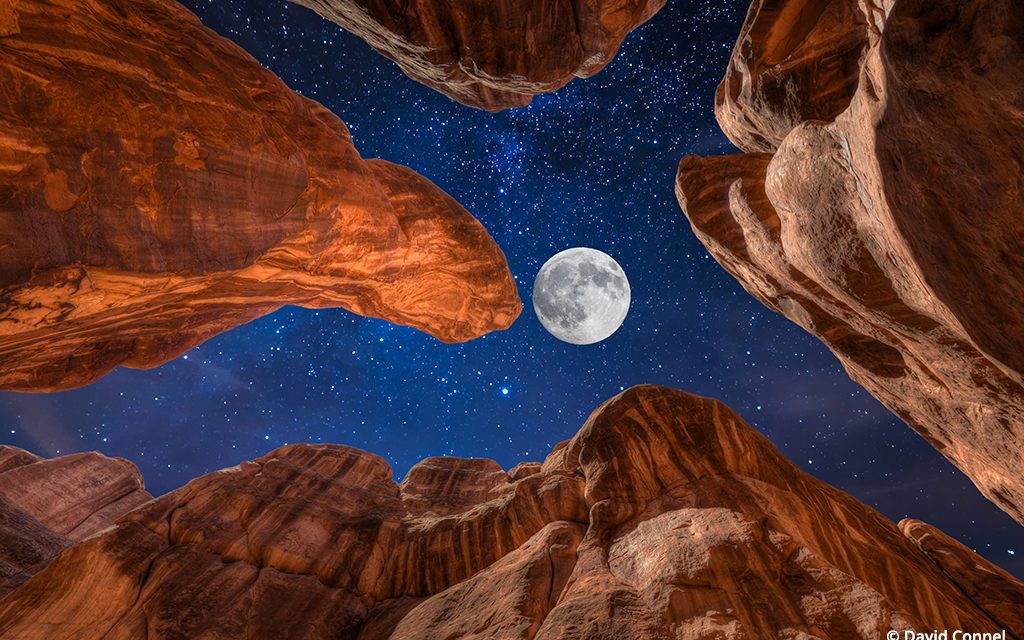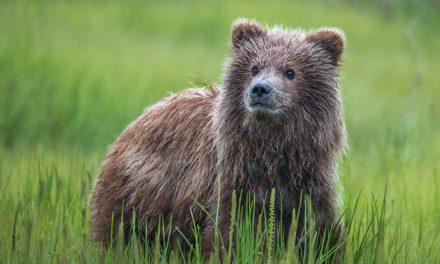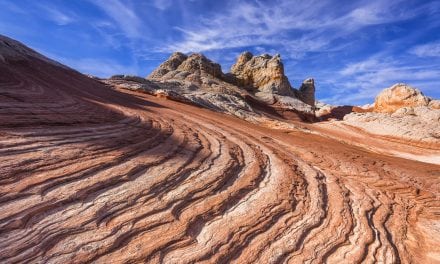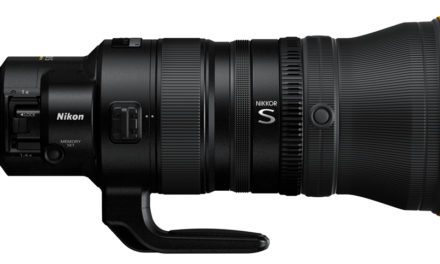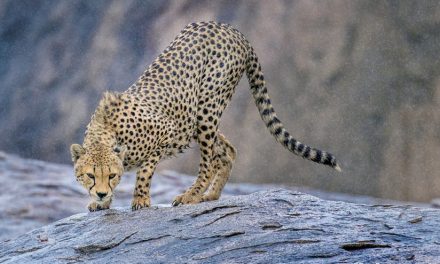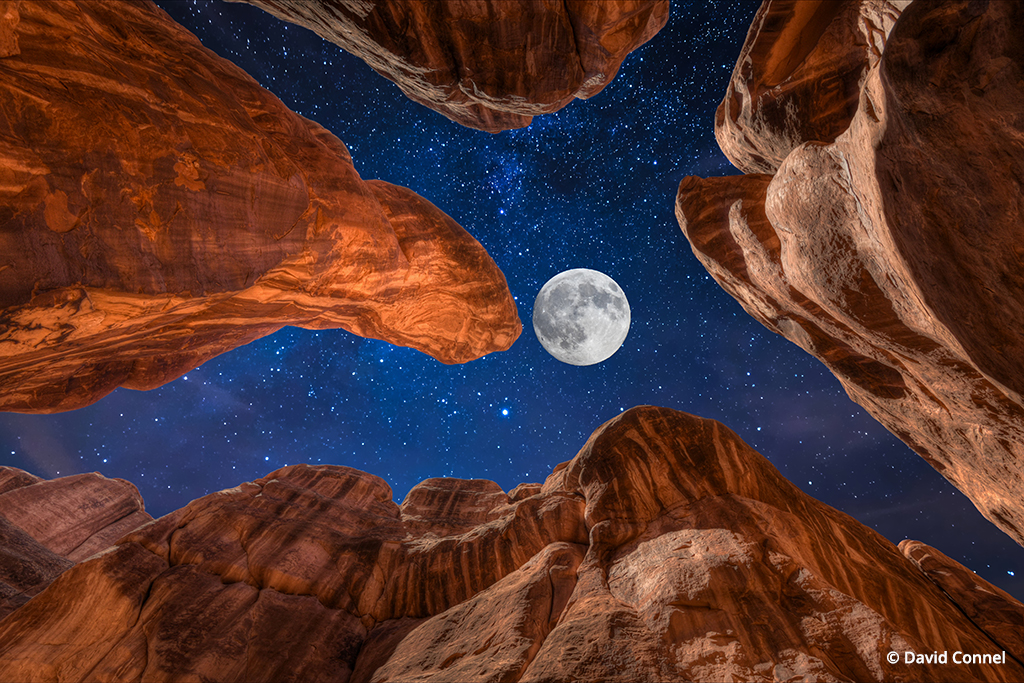
Photo By David Connel
The canyons of Arizona and Utah are some of my favorite photographic locations. The reflective light makes the canyon walls glow. After a day of photographing this particular slot canyon, I thought it would make a great night project. The canyon was too narrow to capture the Milky Way but was wide enough for the full moon. I used one of the many available star charting apps to determine if, where and when the moon would line up above the canyon walls. Hiking back to this spot on the predetermined evening, I paid close attention to the landmarks that would be visible in the dark of night in order to find my way back to the trailhead later.
Setting up my tripod was the most critical aspect of obtaining this image. The tripod could not move at all once it was set up. I hung a weighted pack on it to hold it in place and made sure all control knobs were firmly locked in place. I used the mirror-up feature on my DSLR and a remote shutter release to reduce camera vibrations.
This is a composite of four different photographs combined into one image in post-processing. The first exposure captured the rock details at twilight. The second shot brought out the colors of the canyon walls after dark enhanced by light painting. Because these particular canyon walls were too high for my usual lighting technique using gel-covered light tubes, I used a large flashlight with a warming filter to illuminate the scene. The third photograph captured the night sky and stars using a long exposure, and the fourth was the crucial shot of the moon.
As the app predicted, the moon appeared in the gap above the canyon walls. I had to work fast since the moon was in the correct position for a very short period of time, taking care not to over-expose the full moon. In post-processing, I edited each photograph individually before combining them into one image. Then, I performed one last edit to ensure the final image was seamless, and the four exposures were blended together.
My previous attempts to use this technique didn’t work out successfully. The biggest source of failure was the tripod setup. If the tripod is accidentally bumped or realigned during the time it takes to complete the images, it will ruin the project. Make sure all batteries are fully charged, carry spares if the weather is cold, and be sure to check the weather forecast. I had a lunar eclipse photo shoot in Utah ruined by a last-minute cloud cover. Take care when combining the images to keep halos and artifacts along edges to a minimum.
The time required to complete this project will exercise your patience. Start to finish, principal photography took over six hours. It required a lot of planning, patience and learning from past failures to create this image, but it was worth the time and effort. It’s very rewarding to execute a photographic vision successfully.
Nikon D810, AF-S NIKKOR 16-35mm f/4G ED VR, Benro tripod.
The post Behind The Shot: Slot Canyon Moon Rise appeared first on Outdoor Photographer.

